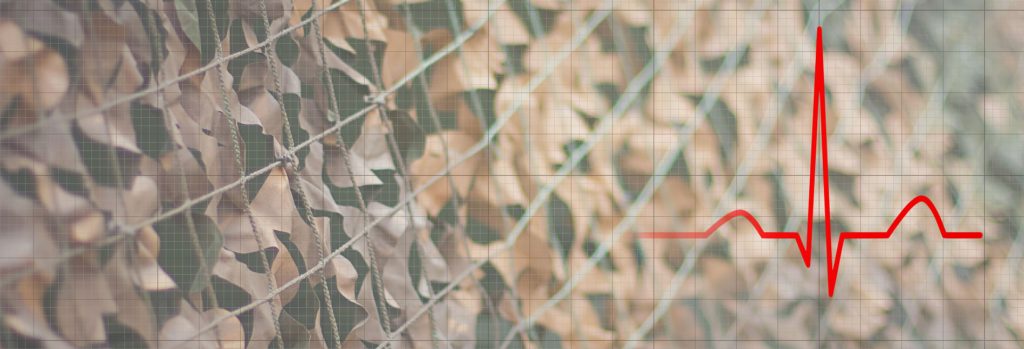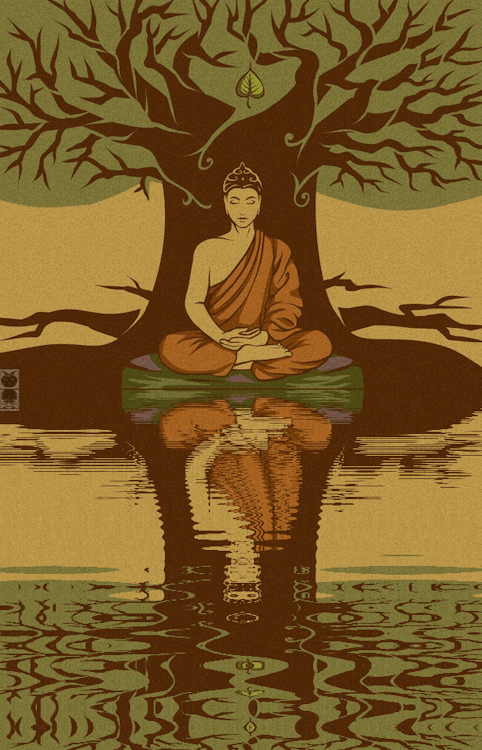
The condition of post-traumatic stress disorder has been known to exist at least since the times of ancient Greece. In the American wars, this condition received many names such as “soldier’s heart”, “shell shock”, “war neurosis” and many soldiers were labelled as having “combat fatigue” or “combat stress reaction.” It wasn’t until 1980´s that it became known as post-traumatic stress disorder or PTSD. This condition is classified as a mental illness that originates through having lived a terrifying event or traumatic experiences that are prompting nightmares, episodes of anxiety, depression and panic attacks among others. These symptoms can appear the same day, months or even years after the traumatic event. Usually these are events that cause a very deep impact on the psyche of the person and these recur in the unconscious to be detonated by triggers that are directly or indirectly related to the trauma. PTSD is a natural response to overwhelming danger and the instinctive reaction is to protect oneself, attack or escape from the situation.
The person suffering from PTSD usually enters into a cycle of retreating into isolation, recurrence flashbacks of the trauma, loads of anxiety and sleeping problems that promotes to seek legal or illegal drugs to be able to cope with this condition. Likewise, when PTSD and addiction co-exist, the levels for drug craving become higher and worsens the entire condition by amplifying more its symptoms.
The acts of physical and / or emotional violence, together with the wars that we continue to live are the main causes of PTSD.
It is also important to understand that certain types of events that produce the PTSD symptoms affect only in some people but not in others. The thing that makes an event traumatic is that certain experiences simply don’t make sense and can’t be understood by the current thought framework from which they were perceived. In the language of psychology, such experiences are unable to be processed by the individual.
 If a particular traumatic experience can be processed, then it is no longer traumatic.
If a particular traumatic experience can be processed, then it is no longer traumatic.
The main problem that does not allow people to process a traumatic event is the constant intense simulation of life. The fast driven pace in western society limits the necessary time, space and silence to be able to digest the traumatic events that can happen in life. When there is a trauma, there is a sensation of hopelessness and a sensation of loss of control. It’s like removing the safe ground where one was standing. It usually brings the sensation of the end of the world as the person knew it and thus, retreats from the self and enters into survival mode.
The shamanistic explanation of PTSD is known as “The Soul left the body” and usually do a communal ceremony to call the soul back into the body. The reason they call the community to gather is due that each person contains a bit of information that will help reconnect the person back to the self. It’s in a way, putting back together the person that is no longer there with the presence of the energies that created his identity.
Science explains that PTSD symptoms are related to decrease activity of the Hippocampus and the shutting off of the prefrontal cortex (PFC) due to the fact that the amygdala fires up the warning signals that can be related to the trauma. The PFC manages our social conducts, our capacity to have empathy and allows us to be present.

It is worth mentioning that treatments with entheogens and master plants offer great results dealing with PTSD. The entheogen and master plants are a doorway to reconnect the person back to the self. Biochemically speaking, some have the direct effect of reconnecting the prefrontal cortex and if they are used in a healing sacred context, can offer an opportunity of comprehension within the person that will assist to digest the traumatic event to be able to let go and find peace with the new reality. This is something that also western modern psychotherapy is trying to accomplish with the use of Lysergic acid diethylamide (LSD) and 4-Methylenedioxymethamphetamine (MDMA) inside a Psychotherapeutic process and have had great promising results with those substances. The limitations to receive such therapies are due to their legal status. Though, now, many organizations and institutions are seeking to legalize these substances for therapy purposes as they have proved to be an effective tool to overcome conditions like PTSD among others.
If we suffer a trauma in our lives, our capacities to feel the other and have compassion are very much diminished by our flight, fleeing reactions whenever the triggers linked to the traumatic event are activated.
Removing the Traumatic aspect of PTSD
When one feels the need to overcome a traumatic event, the best would be to retreat to a safe place where one can be with one self and someone trustworthy that is not related to the event. It’s important to begin to digest the circumstance to begin to take out the traumatic aspect of the event so one is able to find clarity as to why the reason or cause of that experience in one’s life. It will also begin to diminish the symptoms of PTSD as the event begins to be processed and let go in time. Once we are able to identify the opportunity that the event brings, we can then let go consciously everything that needs to fall. Something important to understand is that when trauma occurs, a part of our reality or our comfort zone will collapse and the need to let go of the old reality and cope with the new reality will be essential to be able to reinvent oneself and find peace.

We can begin to take the traumatic aspect of PTSD by being able to confront the event within oneself and by having the capacity to observe outside the circumstance, the opportunity for comprehension and growth. The need of grief and sorrow is necessary for letting go, but once we are finished, we can observe from a broader perspective the new horizon that life is bringing into our lives.
It is important to find the opportunity of growth in all circumstances, maybe even more in the difficult ones.
Emotional Management
It is very important to learn to flow with emotions once an intense emotion takes over. We need to understand that an intense emotion can feel very much alive and real, but the reality is that we lose our self as we become the emotion and we begin to perceive reality through the lens of the emotion itself. There is no total clarity in any type of emotion, it is very important to know that everything we are perceiving while possessed by an emotion is being influenced by the energy of that emotion from which we are observing. Emotions tend to lift or sink the energy of the being, which in both situations offers a distorted reality.
We need to learn how to flow with emotions, let them go and recover our center so we are able to get back to the self. Only there we are able to see what is real.
 Tools to Know your Mind
Tools to Know your Mind
The fact is that there is no emotion without a thought. It is said that the average person has around 30,000 to all the way to 80,000 thoughts per day. That is an average of about 2,000 to 5,000 thoughts per hour from which statistics show to be up to 70% of them to be negative. This is not unusual given the fear based thought methodology we are conditioned in western society and the intense stimulation we are subjected to since infants.
The healing process with entheogens and master plants in the context of a vision quest, Vipassana or only meditation are great tools to understand the mechanisms of the mind that are promoting the PTSD cycle and all of them can offer an opportunity to be able to return to the self. These tools need assisted psychotherapy on the side or a very good friend at least to express and let go anything that might need to be released.
The process of confronting the “darkest” thoughts one could have, understanding the root from where they stem and let them go can be one of the richest experiences for a human being, with tons of relief and wisdom.
Healing Trauma
Once we are back to the self, we can have a more precise perspective of what we need to let go and of the new reality we need to confront and seek acceptance. Usually from this perspective, one can understand the opportunities of growth in all circumstances and that will ease the way to begin to accept the change within ourselves. Once we accept the change of the new reality in our hearts and be at peace with the traumatic event, we can say that we are completely healed.
Living any event on the extreme side of trauma can bring a huge spiritual awakening to those who are able to grow from the experience. Such intense experiences usually can bring a huge transformation in one’s life if there is awareness of the purpose of that event in one’s existence. If we are able to step far from the circumstance and feel the roots and how much transcends into the species, we can find compassion for others and ourselves.
Global View of Trauma
 If we look at trauma as a global phenomenon, the world in general is being passively traumatized through the media, “action” / horror / war movies, social networks with brutal images and ruthless acts towards humanity. From the act of being born in cold hospitals or by cesarean section, to the images of death that we now see very normally on a daily basis, they create small superficial traumas desensitizing us to a state of fear, protection, anxiety, paranoia and lack of trust. Trauma can also be genetic – genes pass down memories of violence e.g. those done to first nation people, refugees PTSD and other forms of emotional abuse.
If we look at trauma as a global phenomenon, the world in general is being passively traumatized through the media, “action” / horror / war movies, social networks with brutal images and ruthless acts towards humanity. From the act of being born in cold hospitals or by cesarean section, to the images of death that we now see very normally on a daily basis, they create small superficial traumas desensitizing us to a state of fear, protection, anxiety, paranoia and lack of trust. Trauma can also be genetic – genes pass down memories of violence e.g. those done to first nation people, refugees PTSD and other forms of emotional abuse.
The healing processes that we have been able to serve, the majority of sufferings come from small and huge traumatic events that people have lived and usually repeat themselves through life. From the smallest that can be a parent saying something very demeaning to their children and cursing them to be a certain way, the divorce of parents or partner, to a very violent situation of abuse or death. Basically trauma is a situation of disconnection, which for humans evolutionarily meant death, since prehistoric humans relied on others and belonging to a group for their very survival.
 We could see PTSD as a window to realize the consequences of the trauma to which we subject our children, forcing them to be something they are not and continue to perpetuate the suffering of humanity generation after generation. The negation of being oneself, can be the greatest trauma that we now experience as humanity. Not respecting the difference and trying to impose or convert the other as one wants it to be, will continue to be one of the main causes of violence on this planet.
We could see PTSD as a window to realize the consequences of the trauma to which we subject our children, forcing them to be something they are not and continue to perpetuate the suffering of humanity generation after generation. The negation of being oneself, can be the greatest trauma that we now experience as humanity. Not respecting the difference and trying to impose or convert the other as one wants it to be, will continue to be one of the main causes of violence on this planet.
The Western system in which we live is a great trauma to the human spirit. Religion being the fundamental institutional basis of the system is designed to repress our sexuality and our relationship with God. Both aspects lead the being to a total disconnection with itself and with the universe, disabling the power of self-healing, aimlessly and promoting a sense of lack of meaning of life. Education systems destroy our ability to find our own voice by telling us what to think/say and forcing us to submit to logic and reason. This submission to the mind closes the possibility of feeling who we truly are, confusing us with ideas of gender, nation, color and race. We become completely blind with the form.
In general, we could say that the western world is experiencing a passive post-traumatic stress disorder and the people who are being diagnosed with this condition are only amplified mirrors of what is happening in a slightly milder degree within each one of us.
 Tools to Know your Mind
Tools to Know your Mind
Dana M Shannon says:
Hi. Is there any type of scholorship or financial assistance available. Thank you.
Dana Shannon
In search of PTSD treatment
Admin says:
If you are a USA resident, there is a financial aid available through a third party or else, we can see other options that could fit your needs. Please read our Payment Policy.